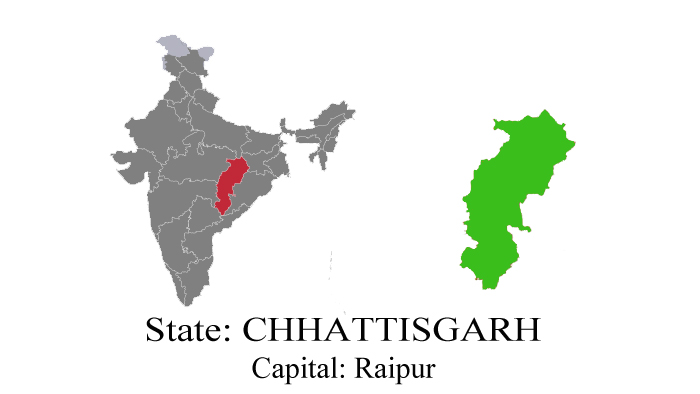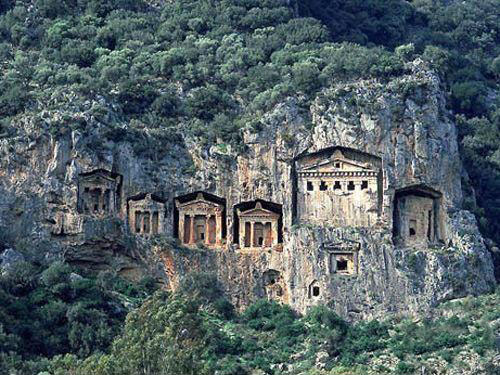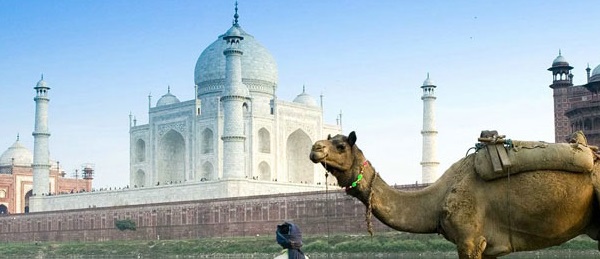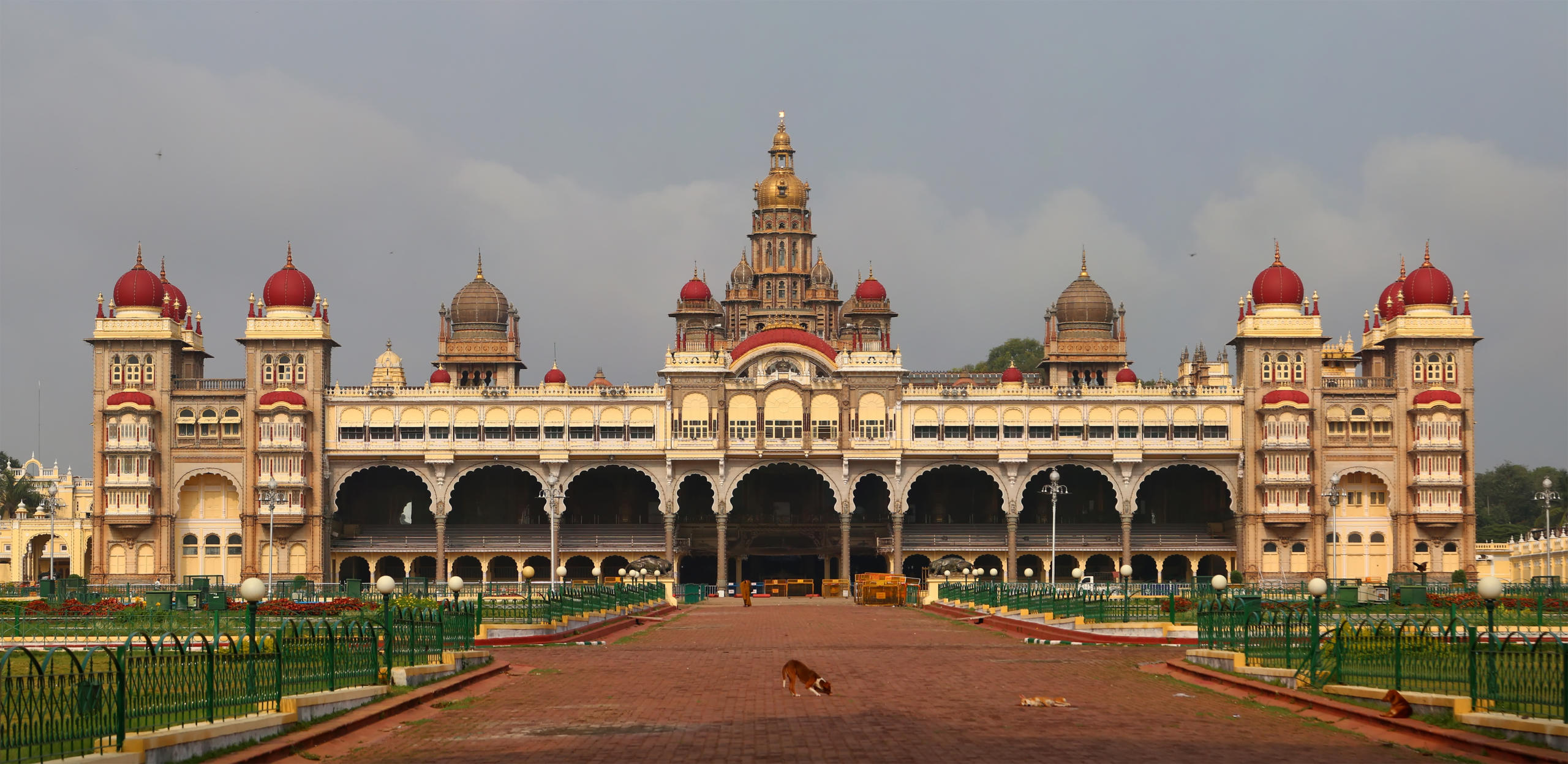Chhattisgarh – A 21st century state of India

Chhattisgarh, a 21st century State, was carved out of Madhya Pradesh on November 1, 2000. The state has 36 Garhs (forts), so the name – Chattisgarh. The capital city is Raipur. Larger than Tamil Nadu, it is fortunate to have a low population density. Good Governance is the highest priority in this Fast Track State. There is both policy stability as well as political stability. The government has been kept small and the State is in excellent fiscal health.
Chhattisgarh is truly a land of opportunities. With all major minerals including diamonds in abundance, it is the richest State in mineral resources. There are mega industries in Steel, Aluminium, and Cement. Chhattisgarh contributes substantially to the Human Resources of India. Bhilai, the knowledge capital of the State, alone sends over 50 students to the elite Indian Institutes of Technology every year. A unique Private Universities Act has been passed to attract investments in quality higher education. Its large power surplus is attracting power-intensive industries, and the State is poised to become the power-hub of the nation. Its central location helps easy power transmission to any part of the country. The State is supplying power to Delhi, Gujarat, and Karnataka, among others.
Chhattisgarh ranks high in terms of good industrial relations and labor productivity. There has been no labor unrest in either Bhilai or Korba, the Power capital, for several decades. 12% of India’s forests are in Chhattisgarh, and 44% of the State’s land is under forests. Identified as one of the richest biodiversity habitats, the Green State of Chhattisgarh has the densest forests in India, rich wildlife, and above all, over 200 non-timber forest products, with tremendous potential for value addition.
One-third of Chhattisgarh’s population is of tribes, mostly in the thickly forested areas in the North and South. The central plains of Chhattisgarh are known as the “Rice Bowl” of Central India. Female literacy has doubled in the last decade, and male literacy is higher than India’s average. The gender ratio is next only to Kerala. Chhattisgarh, situated in the heart of India, is endowed with a rich cultural heritage and attractive natural diversity.
The State is full of ancient monuments, rare wildlife, exquisitely carved temples, Buddhist sites, palaces, waterfalls, caves, rock paintings, and hill plateaus. Most of these sites are untouched and unexplored and offer a unique and alternate experience to tourists compared to traditional destinations which have become overcrowded. Chhattisgarh offers the tourist a Destination with a Difference. With a 12% share of India’s forests, Chhattisgarh’s 3 National Parks and 11 Wildlife Sanctuaries and National Parks are a major attraction. The State encourages the development of pilgrimage centers. Rajim, Champaranya, Dongargarh, Sheorinarayan, Girodhpuri, Dantewada, Ratanpur, Sirpur, and others are prime destinations for pilgrim tourism. Sirpur and Dongargarh would be part of the wider Buddhist tourist circuit.

Fast Facts :
-
Area: 135194 Sq. Km
-
Capital: Raipur
-
Languages: Hindi and Chhattisgarhi
-
Religion: Hinduism, Islam, and Christianity
-
Literacy rate: 57.14%
-
Best Time To Visit: September To February
-
State Emblem: Ashoka lions, ears of rice, lightning, 36 fortresses

-
State Animal: Indian grey mongoose
-
State Bird: Indian grey hornbill
-
State Tree: Mango tree
-
State Flower: Dhak flower
- Culture and Tradition of Chhattisgarh
Tourist Attractions :
Raipur
As the capital city of the fledgling state of Chattisgarh, Raipur has regained some of its lost glory. King Ram Chandra of the Kalchuri dynasty established the city of Raipur in the 14th century, Raipur was the nerve center of the kingdoms of the region from where successive kings easily controlled the many fortresses in the Chattisgarh region.
Chitrakot Waterfall

Located in the Bastar district of Chhattisgarh, you can have a beautiful view of the Chitrakoot waterfall. It is 95 feet high and 985 feet wide which is one-third of the Niagara fall. For this reason, it is the widest waterfall in India. If you look from a distance, you will find this waterfall no less than a dream and you will not forget this view even in your life
Kailash Kutumsar Caves

The Kailash and Kutumsar Caves in Bastar, Chhatisgarh, are a standout amongst the most prevalent visitor destinations in the range. They are situated in the thick timberlands of Kanger Valley National Park, near Tiratgarh waterfalls, and have impressive stalactites and stalagmites structures found anywhere in the world.
Teerathgarh Falls
Chhattisgarh is full of natural beauty. Talking about the waterfall, there is more than one waterfall here. One of these specials is the Tirathgarh waterfall. Tirathgarh waterfall is 299 feet on the Kanger river in the Bastar district of Chhattisgarh. It is a part of the Kanger Valley National Park and is surrounded by beautiful forests and abundant flora and wildlife.
Bhoramdeo Temple

One is relieved after seeing Shivalinga in the 10th-century Bhoramdev temple in the Kawardha district of Chhattisgarh. The temple is the star of all eyes due to the miracle of sculpture with exquisite carvings of deities and human figures. Every year, devotees from not only the country but from abroad also come to worship here. Suggested Read: Madhya Pradesh – Culture and Tradition
Getting There :
-
By Air: Raipur, the capital of Chattisgarh, is the only place in the state that is linked by air to New Delhi, Mumbai, Kolkata, and Nagpur by regular Indian Airlines flights.
-
By Rail: Raipur and Bilaspur are the two main junctions that are on the routes of express and passenger trains that either directly or indirectly connect the state to other parts of India.
-
By Road: Interstate State Roadways buses ply between different cities while chartered bus operators run services on the major routes.







